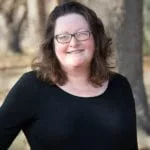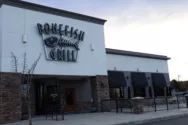
Home » Pandemic pressures force closure of Chaplaincy palliative care
Pandemic pressures force closure of Chaplaincy palliative care

December 16, 2020
Chaplaincy Health Care, the Richland nonprofit that serves the terminally ill and the grieving, will close its palliative care program at the end of December.
Gary Castillo, executive director, cited fallout from the Covid-19 pandemic and an unsustainable financial model for the move. He notified staff and the program’s 160 patients of the decision in mid-November.
Castillo, who helped launch palliative care seven years ago, called it a gut-wrenching move that leaves a gap in services to ill patients who are not eligible for hospice.
Even without the pressures of the pandemic, Chaplaincy was unable to serve all the patients who need the support its staff of nurses, social workers and chaplains provided. It routinely received more referrals than it could accommodate.
No one had stepped up to fill the gap in early December. Still, Castillo said he is encouraged by discussions sparked by news that Chaplaincy would step down.
“I see a lot of community interest in having palliative care,” he said.
It will take the resources of more than one organization to serve all the needs.
“I think it’s going to take a broader coalition of community health providers to provide this service,” he said.
Palliative is one of the services the not-for-profit Chaplaincy provides in support of its spiritual mission. It provides hospice service to the terminally ill, grief support and contracts with area hospitals and the Benton County Jail to provide chaplains.
All are affected by the pandemic and its limitations on face-to-face contact, Castillo said. The hospice census dropped 10% by late fall, to about 170 patients.
Medicare pays for services to eligible hospice patients, but palliative care is a bit of an orphan with no dedicated funding stream.
That stems from its undefined nature. Hospice patients have a terminal diagnosis and six-month prognosis for death. Palliative patients may be gravely ill but are still being treated.
Nursing services are covered, but the rest of the palliative care program’s $500,000 budget relies on “surplus” funds from hospice and fundraising.
The surplus has evaporated in the face of rising regulations and falling fundraising.
“We simply are not able to sustain this (palliative) program,” he said.
With no formal definition for “palliative care,” programs can range from a single nurse or social worker who checks on clients by phone to more robust suites of in-home services involving nurses, chaplains and social workers.
The Chaplaincy version began seven years ago as a simple program with one nurse. But it evolved into a robust program with not only nurses but social workers and chaplains.
Five workers were laid off while a sixth remained on in a part-time role at hospice.
While palliative care is ending, the other programs have had to adapt to the pandemic.
Chaplaincy closed its popular thrift stores from mid-March through July.
It received a Paycheck Protection program forgivable loan through the federal Coronavirus Aid Relief and Economic Security, or CARES, Act that kept staff employed. In the early days of the pandemic, a shortage of masks, sanitizer and other personal protective equipment forced the nonprofit to adjust how staff visited hospice patients.
Local News
KEYWORDS december 2020





